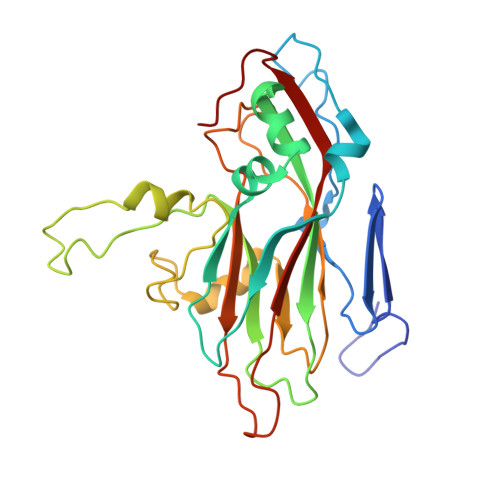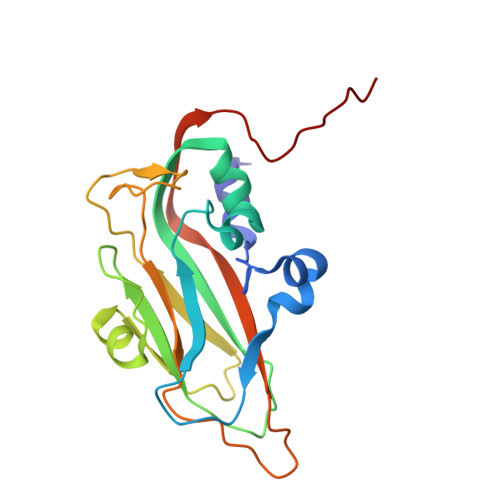Combined Approaches to Flexible Fitting and Assessment in Virus Capsids Undergoing Conformational Change.
Pandurangan, A.P., Shakeel, S., Butcher, S.J., Topf, M.(2014) J Struct Biol 185: 427
- PubMed: 24333899
- DOI: https://doi.org/10.1016/j.jsb.2013.12.003
- Primary Citation of Related Structures:
4BIP, 4BIQ - PubMed Abstract:
Fitting of atomic components into electron cryo-microscopy (cryoEM) density maps is routinely used to understand the structure and function of macromolecular machines. Many fitting methods have been developed, but a standard protocol for successful fitting and assessment of fitted models has yet to be agreed upon among the experts in the field. Here, we created and tested a protocol that highlights important issues related to homology modelling, density map segmentation, rigid and flexible fitting, as well as the assessment of fits. As part of it, we use two different flexible fitting methods (Flex-EM and iMODfit) and demonstrate how combining the analysis of multiple fits and model assessment could result in an improved model. The protocol is applied to the case of the mature and empty capsids of Coxsackievirus A7 (CAV7) by flexibly fitting homology models into the corresponding cryoEM density maps at 8.2 and 6.1Å resolution. As a result, and due to the improved homology models (derived from recently solved crystal structures of a close homolog - EV71 capsid - in mature and empty forms), the final models present an improvement over previously published models. In close agreement with the capsid expansion observed in the EV71 structures, the new CAV7 models reveal that the expansion is accompanied by ∼5° counterclockwise rotation of the asymmetric unit, predominantly contributed by the capsid protein VP1. The protocol could be applied not only to viral capsids but also to many other complexes characterised by a combination of atomic structure modelling and cryoEM density fitting.
Organizational Affiliation:
Institute of Structural and Molecular Biology, Department of Biological Sciences/Crystallography, Birkbeck College, University of London, Malet Street, London WC1E 7HX, United Kingdom.
















